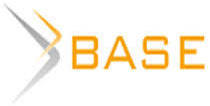DOI:
10.18413 /2408-932X-2014-1-1-33-45
The objectives reported in the paper under study are: firstly, to examine the role of symbols and symbolic policy in the political process; signs and symbols in the political culture of society depending on the nature and degree of its maturity; secondly, to specify the place of “soft power” in symbolic policy and political culture.
Methodologically the paper presents the interdisciplinary basis, using theories of visual representation, political semiotics, and cultural stigmatization.
The output of the research is the division of symbolic complexes into positive and negative. The complexes representing national interests reinforce the positive colour of symbols of people and the state, allied nations, and negative ones reinforce the negative colour of symbols of the opposing forces. Positive character complexes are located on the highest level of legitimation – the values and norms of the Constitution, the official and unofficial state and national symbols.
The application of research output is possible in building theoretical and methodological models of semiotic resources based on national and historical features of political culture.
The main findings include the following: signs and symbols – the types of information, intermediaries between the knower and the object of knowledge – are concentrated in the symbolic complexes that are a political resource; they play an important role in the content and mechanism of political culture. "Soft power" has a symbolic content and is a tool of symbolic policy. The scope of "soft power" is expanding, but the content of the notion is fixed on a mobile, but relatively specific phenomenon with semiotic base.
Keywords: signs and symbols,
political culture,
symbolic resources,
the symbolic politics,
symbolic complexes,
symbols of national interests,
«soft power».
Number of views: 6344 (view statistics)
Количество скачиваний: 10063
All journals
Send article
Research Result. Social Studies and Humanities is included in the scientific database of the RINTs (license agreement No. 765-12/2014 dated 08.12.2014).
The journal is included in the list of peer-reviewed scientific publications recommended by the Higher Attestation Commission (as of 25.12.2020 (№ 1590)). vak.minobrnauki.gov.ru

















While nobody left any comments to this publication.
You can be first.